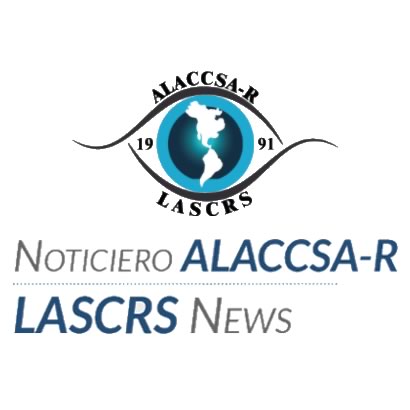Entrevista con Dra. Hiroko Bissen-Miyajima
Entrevista realizada por el Dr. Virgilio Centurion.


Contacto
Dra. Hiroko Bissen-Miyajima – bissen@tdc.ac.jp
Dr. Virgilio Centurion – centurion@imo.com.br
Dra. Hiroko Bissen-Miyajima is Professor and Chief of the Ophthalmology Department at Tokyo Dental College, Suidobashi Hospital, Tokyo, Japan. She specializes in cataract and refractive surgery and her reputation as a skilled surgeon is well known around the globe. In addition, she is the current president of the Japanese Society of Cataract and Refractive Surgery (JSCRS), and served as president of the International Intraocular Implant Club (IIIC). Besides winning many prominent video and paper awards in the area of cataract and refractive surgery, Prof. Bissen-Miyajima was the Lim Lecture awardee in 2011, the IIIC Medal awardee in 2013, and ASCRS Honored guest in 2016. Dr. Bissen-Miyajima is a regular reviewer for several ophthalmic journals.
1.Which exams are the most relevant when planning to correct astigmatism during a lens surgery?
The exams of total cornea which include anterior and posterior corneal power, irregularity, aberration are ideal. However, in most clinics, the anterior corneal power with auto-keratometry, keratometry with IOL master or Lenstar are the basic information. In addition, the corneal topography to find the regularity or irregularity of the cornea would be helpful to plan the lens surgery.
2.How to be successful with toric IOL: five pearls.
I. Patient’s selection
Patient should be informed that his or her vision could be improved with toric IOL. If the patient is not aware of his or her astigmatism, preoperative effort of precise examination to achieve better clinical results would be not appreciated.
II. Accurate measurement of corneal curvature
With any type of measurement, the face position should be checked. As for contact lens user, the contact lens should be taken off for a while to exclude the influence on the corneal curvature.
III. IOL power calculation
This is the basic to achieve better vision with non-toric and toric IOLs.
IV. IOL axis alignment during surgery
To achieve the accurate positioning of IOL axis, confirming the steep axis with image guided system is ideal. To avoid the technical error of the system, the axis should be confirmed with the record of preoperative examination. In case with manual marking, the surgeon should confirm the steep axis with toric IOL calculation sheet and avoid the misunderstanding of the steep axis due to the head position under the operating microscope.
V. The final confirmation of the IOL position
The most IOL rotation occur within 24 hours after the implantation. Ophthalmic viscosurgical device under the IOL is one of the factors of early rotation and should be carefully removed before finalizing the IOL position.
3.What must be avoided during patient selection for multifocal IOL?
Giving too much expectation should be avoided. Multifocal IOL is an option to have better vision at different distances. However, it does not replace the perfect young-age lens. At our busy clinic, we tend to make the chair time shorter, but explanation of the characteristics of multifocal IOL is an important key for the success of this IOL.
4.For near vision correction which IOL is the most successful in your experience?
It is really depending on the patient’s lifestyle. In Japan, most patients are myopic between -3.0 and -6.0D before the surgery, and had good uncorrected vision at near. For those who read books, +4.0D near addition is preferred, and for those who work with tablet or computer, +3.0D near addition is preferred. Before the trifocal IOL was available, contralateral implantation of bifocal IOL, which means, one eye receives +4.0D near addition and another eye receives lower addition such as +3.0D or +2.5D worked well for those who want good vision for both reading books and computer work. Now, trifocal IOL is available and shows its advantage. Patient enjoys good uncorrected visual acuity at distance, intermediate, and near. I believe the trifocal IOL will fit most patients who wish to be spectacle free. The current trifocal IOLs from different companies have trifocal toric type, and this would also expand the indication for the multifocal IOL.
5.Posterior corneal power: when and how to evaluate? Must be done in all cases?
If one has the equipment to measure the total corneal power, one should evaluate in all cases before the surgery. However, considering the tendency of posterior corneal power depending on the axis of the astigmatism will help even one cannot directly measure the posterior corneal power. The reason of under correcting the cylindrical power in eyes of against-the-rule astigmatism was found to be the influence of posterior astigmatism, and recent toric calculator modifies the correcting power according to the axis of the astigmatism.
I believe that it is not easy to have the expensive equipment to measure the total cornea and the new calculator would be a great tool without measuring the total corneal power.
6.Systems as Holos or ORA: are the future or IOL calculation?
These would be ideal to confirm the accurate IOL power and cylindrical axis. I believe that the current approach with Holos or ORA is the beginning. The influence of lid speculum, ocular surface, intraocular pressure, and IOL position should be further considered.

